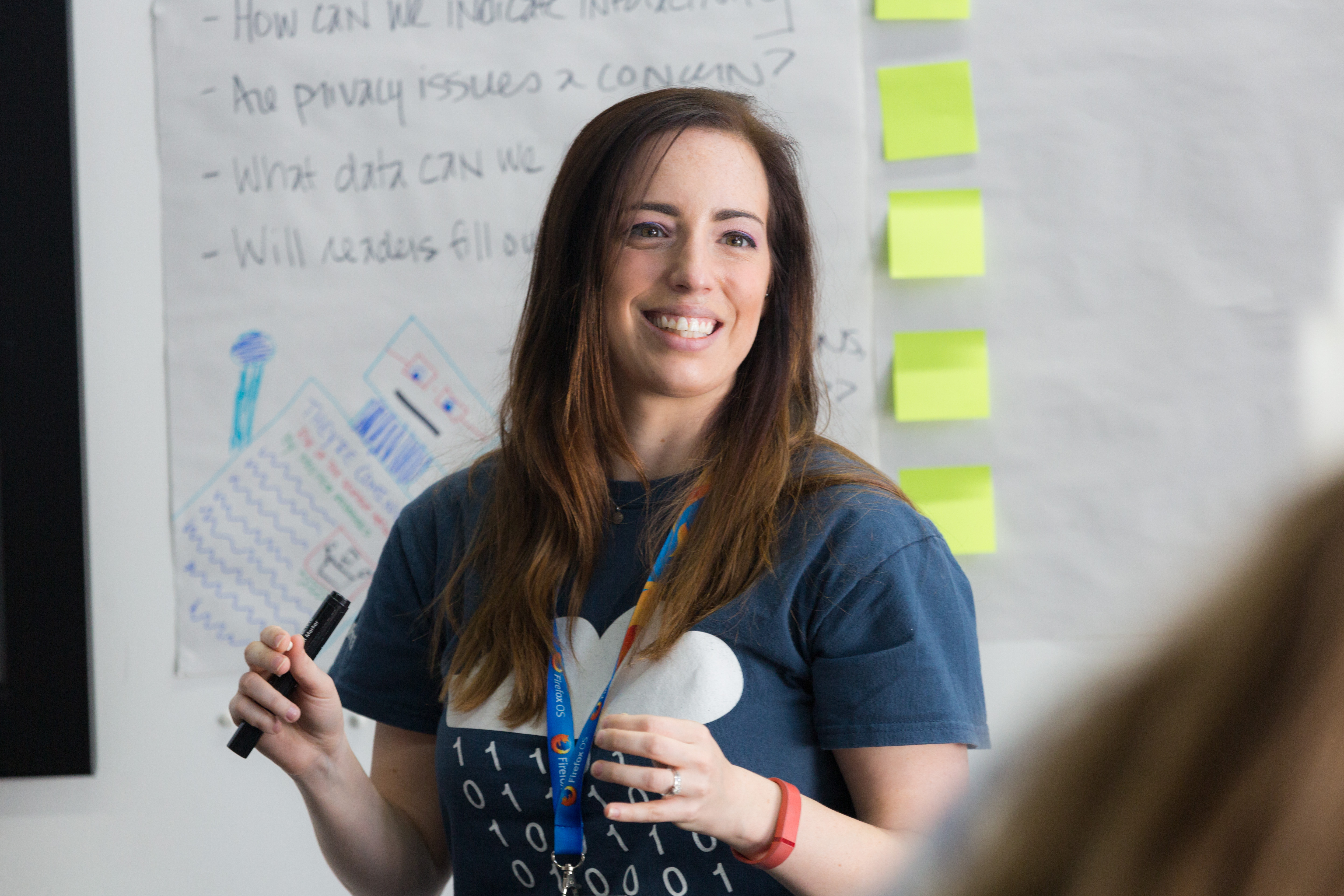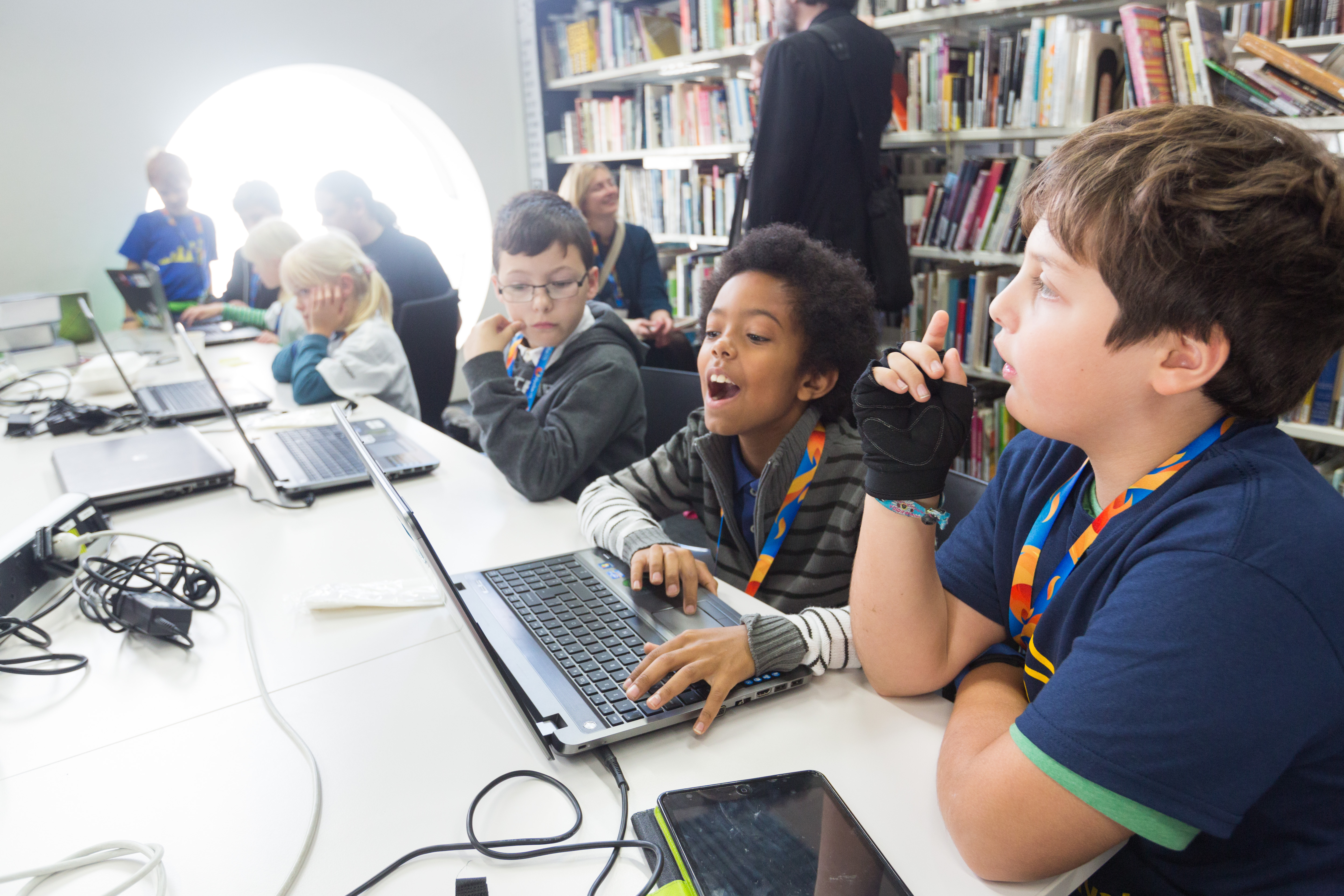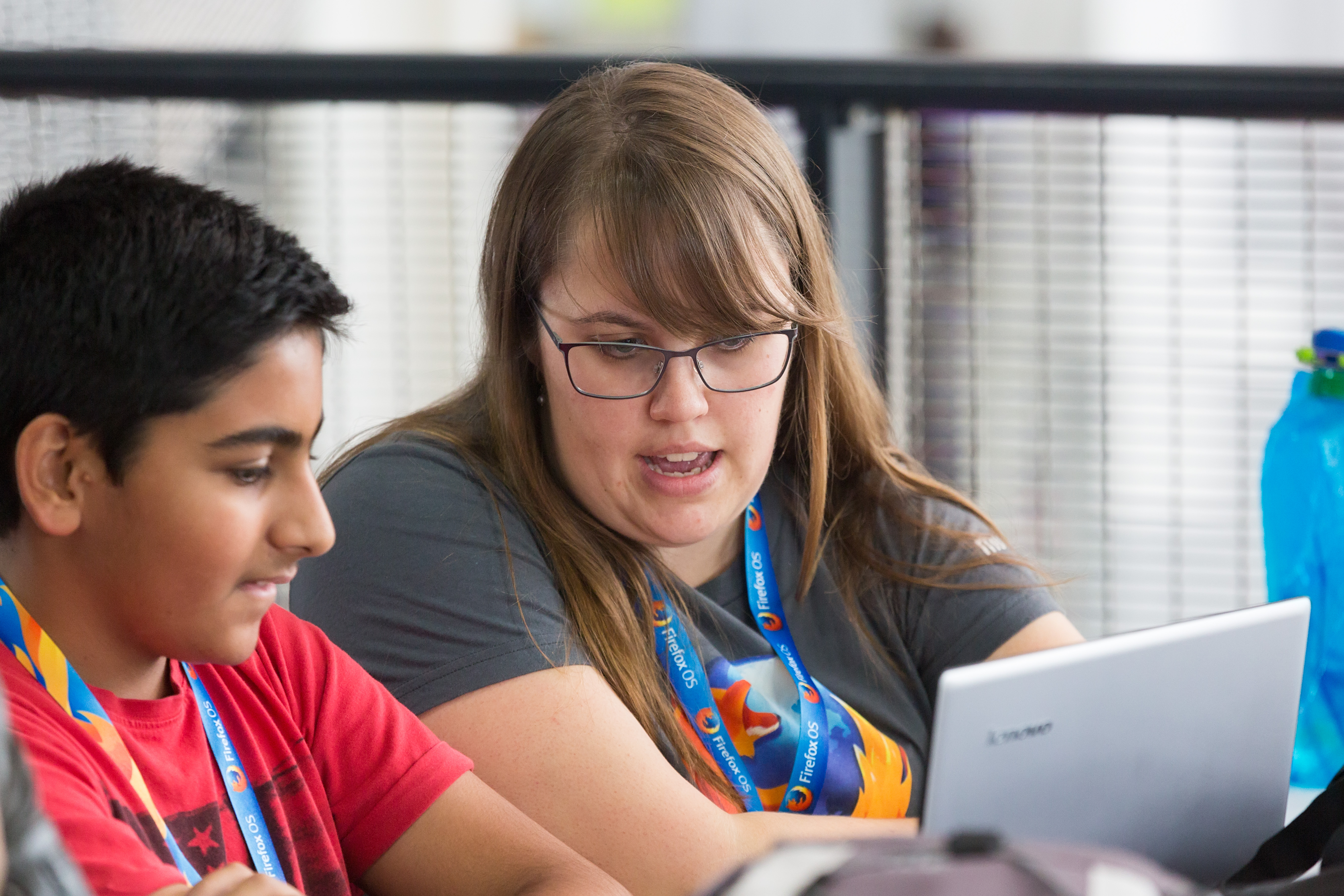Sustaining Engagement through Clubs
Introduction
Members of the Learning Network team as well as Mark Surman and a consultant from Organizing for Action met in Brooklyn from Feb. 9 - 12 to further develop the clubs program. We finalized details of how to build and roll out the program, and how it will be successful.
Specifically, we left with an actionable plan for how we launch clubs. Below is a summary of the key decisions we made.
This action plan is supported by:
- A calendar that specifies what we will offer and by when.
- A detailed list of what's in the clubs package and a path to curating, testing and spreading it: curriculum, online platform, leadership activation, marketing materials.
- A pipeline of clubs we want to bring on-board this year and by when.
- Hypotheses we want to test as we roll out clubs.
Framing
1. Insights from other organizations.
We interviewed and analyzed other successful organizing model, from Code Club to Free the Children to Organizing for Action. These are the best practices we want to apply to clubs:
- Strong, personal on-boarding. This process should be well scripted, available online, and as much as possible, conducted in-person by volunteers.
- Overt, explicit and clear pathways. A contributor's development path in the organization should be widely understood, clearly communicated and compelling for them to pursue it.
- Website that facilitates connections among mentors. There should be a website that serves as a hub and watering hole for the community. Different levels of volunteers should be able to communicate with one another, share resources, and organize themselves. Strong social media presence is a must.
- Support personal development and professional growth. Make clear value propositions, such as training, so community members self-actualize and gain professional experience.
- Permeate a sense of belonging and narrative. There needs to be a Story of Self > Us > Now that is widely understood, oft repeated and made personal by community members. This narrative is bolster by a strong sense of belonging.
- Offer embeddable as well as standalone programming. When existing structures are in place, i.e. via a partner network, offer embeddable activities and support. When individual community members seek structure, offer them guidance on how to build their own.
- Teach local, share global in organized peaks and valleys. Empower community members to make a difference locally & develop local action plans. These should be connected to global campaigns and moments. Organizing requires peaks and valleys, which should be clearly communicated, well planned and celebratory upon completion.
2. Understanding our allies.
We discussed and prioritized our top two club leader personas. These are based on deep relationship with collaborators and an analysis of who would most benefit from and be activated by the clubs program. These are the main personas we' we're serving, with a refined understanding of their motivations, their needs and concerns.

- Motivation: Strong on MISSION. Cares about the web, issues like privacy.
- Needs: Help on how to teach. Seeks collaborators and a community.
- Incentives: Belonging, impact, recognition.
- Concerns: Feeling under appreciated, mixed to low teaching skills

- Motivation: Strong on STRUCTURE.Wants good content for their learners
- Needs: Curriculum & web tools, professional development, access to skilled educators
- Incentives: Engaged learners, professional develop credentials
- Concerns: Not drawn primarily by cause, narrative or brand.
|
|
<-------------------------------------->
| structure
|
|
3. Our values and Point-of-View.
We decided on the values that clubs embody. We established the social practices we want to embed and repeat in the program. These values inform our point-of-view (POV) in our curriculum, leadership development and online tools. Our POV is compelling to our two personas and differentiates us.
- Why we teach: This is our mission.
- We are dedicated to empowering others with web literacy so that they have agency on the web as creators, citizens and future leaders.
- How we teach: This is our pedagogy.
- Teaching and learning is how we achieve our mission. They are political as well as self-actualizing acts. We teach and learn by making projects together and openly reflecting on the process in an inclusive and locally relevant environment. Learning is social, production-centered, and open-ended. It is done best when facilitated in small groups meeting in-person.
- Who we teach: This is our audience.
- We teach our peers, so that we can reflect and improve together. We teach our local community, so we can give back and make a different locally.
- What we teach: This is our subject.
- We teach web literacy, which encompasses the mechanics, culture and citizenship of the web. Our learners are more self-actualized as creators when they can use the web as a platform for creativity. They are better citizens when they can make more informed choices on the web. And they are economically more empowered with skills and practical knowledge of this public resources.
- Where we teach: This is our classroom.
- We teach locally, wherever we have our learners, be that in formal classrooms, to libraries and coffee shops and kitchen tables. We learn globally, as we connect with peers who inspire and mentor us to make local change that has a global impact.

Success Is...
1. Metrics.
We decided what it means to "be active in a city" for Mozilla Learning Networks in 2015. Our goal this year is 500 cities. A city has to fulfill one of the following to count:
- 3 volunteer job roles filled and reporting on local activity
- 1 event per quarter done by the same leader(s) (or pledged)
2. Naming.
We also discussed what to name this initiative and larger branding implications. Our conclusion: "Mozilla Academy"
- Focus on "Mozilla" as the uniting brand. This is preferred over "Webmaker", "Hive" or other secondary brand. "Moz" can continue as suffix.
- Test out "Academy" or similar name instead of "clubs." This clearly communicates learning, some structure, but also expandability. You can have one local Mozilla Academy, as well as a global online Mozilla Academy of all the mentors.
- Continue using generic suffix, i.e. " __ Party", "__ Festival", "__ Learning Network" as the generic part of the Mozilla branding equation.
3. Organizing model.
To be successful, we need tiers of organizing. These were deeply informed by our affiliate comparison work and leveraging existing tiers. We anticipate needing three job roles, at least. The job descriptions are here: https://teach.etherpad.mozilla.org/clubroles
- Club Leader
- Regional Coordinator
- Organizer

Program Offering
1. Leadership Development.
We defined what leadership skills we want to foster in our community, the job descriptions that support and encourage their development, and the offering we provide to help them develop as leaders. This is what we agreed on needing, with tiers of access: Anyone [grab & go for all resources], Club Leaders [grab & go AND club-specific resources], Regional Coordinator [all the above AND regional coordinator training]
- Job descriptions with clear expectations for each leadership role.
- On-boarding that is personal and covers messaging, personally owning The Story of Self.
- Professional development
- how to teach
- how to be a good facilitator
- how to foster an inclusive, open culture
- how to be a good project manager
- how to adapt curriculum to your learners
- how to do community outreach
- Modeling
- Pattern of 1:1 meetings, club evaluations, testing.
- Participating in forums and modeling best practices
- Documenting exemplary club activity
- Recognizing and celebrating learners and mentors
- Partnering and local action planning
- Make strategic local plans
- On-board and work with local partners
- Reflect and iterate on local plans
2. Online Platform.
We scoped requirements and prioritized the phases of development. These tickets describe the features in scope for v1.0, aimed for release at the end of Q!: https://github.com/MozillaFoundation/Mozilla-Learning/labels/v1. The top-level summary of the v1.0 site is:
- Showcase resources for teaching and organizing
- Connect mentors to one another
- Show clubs on a map
3. Curriculum.
- We identified the two streams of curriculum we want to create and a path to packaging and testing it.
- Web Literacy: learners are end-users
- Teach like Mozilla: mentors are the end-users
- We concluded we want top-line curriculum partners for each module, including MDN, IMLS, Rio LAN Houses and Aspiration. Each module will have a final project with a light "give it forward" ask to go out and teach the module to someone else.
- Curriculum will be mobile-optimized and where possible, point to the Webmaker tool but not exclusively. It will include learning outcomes and questionnaires, as well as templates for featured remixes.
- This first quarter will focus on getting the module architecture right. Then in Q2 we'll work on distributed "barnraising" to populate later modules including writing out roles and incentives.
- See the curriculum queue: http://mozilla.github.io/webmaker-curriculum/

Program Roll Out
1. Partner Criteria
We've used "partnerships" in a very broad way in the past. Going forward, we want to be more specific about what a partner is, so we can better find and serve them, and so we can give our close partners the level of attention they need. We would rather have fewer, more strategic and sustaining partnerships, than many light uninvolved ones.
- A partner is eligible if they:
- have local nodes in 2+ cities
- already have Regional Coordinators, or are committed to finding and sustaining them
- are interested in our curriculum, organizing model or training
- Mozilla can deliver:
- on-boarding and continued support to the partner's Regional Coordinators
- an organizing model
- existing curriculum
- The partnership is closed when:
- the partner commits to fulfilling the Regional Coordinator role
- a Mozilla staff organizer has met and confirmed the terms with the Regional Coordinator
- under exceptional circustances, like notable funding or reach, any curriculum or organizing model adaptions have been scoped and agreed upon by the partner and the Mozilla staff organizer.
Maker Party
Campaigning is a powerful way to organize peaks and valleys for the community. This year, the Maker Party will evolve in the following important ways:
- Asynchronous, instead of synchronous. Spread throughout the year, instead of just two / three months.
- Super-localized. Developing deep knowledge, partnerships, product learning, etc. e.g., When’re we’re focused on Brazil, we’re *really* focused on Brazil
- Focused where we have heat. Our current base + key countries for 2015.
- Tightly integrated w. partner salesWork even more closely w. partnerships / sales.
- Marketing supported...
- Support and coordination with directed, niche marketing. Trying to broader MoFo and Mozilla-wide efforts wherever possible.
The emphasis for the Learning Network team is on leadership and organizing structure. Not just sustained activity, but also volunteers growing, getting better and more impactful -- and getting more responsibility as a result, building a larger-scale system by managing other volunteers, etc.

Mozfest
We discussed how Mozfest can be a reflective and activating moment for clubs. We are proposing the following programmatic arc to convene and celebrate our community, as well as on-board the next cohorts.
Convene our regional coordinators, fellows and facilitators.
Share web literacy & leadership skills. On-board next cohorts.
Open to the public. Discover and play. Grow the circle.
Mobilzing
We will continue engaging out 10K lists through two important initaitives:
- Teach the Web Podcast. A regular podcast sharing skills and experiences that add value to our core mentor audience. Begin to feature clubs' activitities.
- Newsletter. Regular email updates to our large mailing lists, updating them on the program and sharing the podcast and club activities to keep them engaged.
Next Steps
Find our roadmap, milestones and assigned next steps in our Github repository.
